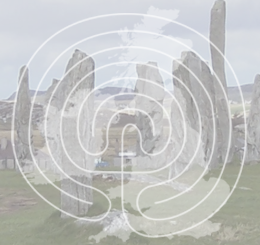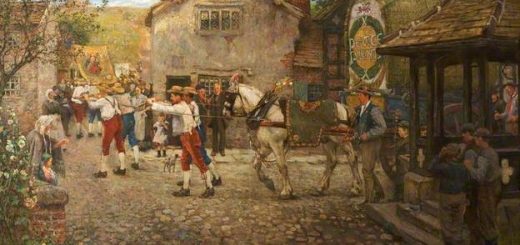Penmon and Saint Seiriol
Penmon is a parish found on the south-east tip of Ynys Môn (the Isle of Anglesey). Things to see here include Penmon Priory, Saint Seiriol’s Church, Saint Seiriol’s Well, a dovecote and the Penmon crosses. The walls near to the well and church could be the oldest remaining Christian structure in the principality if they are the remains of Saint Seiriol’s 6th Century church.
 Penmon Priory and Saint Seiriol’s Church
Penmon Priory and Saint Seiriol’s Church
Founded by Saint Seiriol in the 6th Century, Penmon Priory (Saint Seiriol’s Monastery) grew in size and had an accompanying wooden church by the 10th Century. This church was unfortunately destroyed by the Vikings in 971AD, but it was later rebuilt in stone between 1120 and 1123AD under Prince Gruffydd ap Cynan and Owain Gwynedd. In the 13th Century the priory was enlarged, and in the 16th Century a kitchen and warming house were built at the east of the building. So after attacks from the Vikings, Normans and surviving the conquest of King Edward I, the priory was eventually dissolved in 1538. The part of the priory which stands today once contained the refectory with a dormitory above.
![User:Jonathan Oldenbuck [GFDL (http://www.gnu.org/copyleft/fdl.html) or CC BY-SA 3.0 (https://creativecommons.org/licenses/by-sa/3.0)], from Wikimedia Commons](http://www.mysteriousbritain.co.uk/wp/wp-content/uploads/2012/06/450px-Penmon_Cross-225x300.jpg) The Penmon Crosses
The Penmon Crosses
These are two medieval crosses from the 10th Century that once stood in front of the monastery at the gates. They are now found inside Saint Seiriol’s church. The larger cross is weather beaten; having spent many years outside but you can still barely see the decorative patterns and a pictorial scene showing the temptation of Saint Anthony, along with a possible hunting scene. The smaller cross is not as weathered but it has an arm missing because it was once used as a lintel for the refectory windows. It is decorated with knot work carving and it has two animal heads on the sides.
Saint Seiriol’s Well (Ffynnon Seiriol)
This well was built by the Penmon monks, and was (and still is) believed to have healing powers by some of its visitors. It is one of the oldest buildings in Penmon, and is surrounded by a small chamber erected in the 19th Century. It was often visited by pilgrims and baptisms also took place the well.
![Keith Ruffles [CC BY 3.0 (https://creativecommons.org/licenses/by/3.0)]](http://www.mysteriousbritain.co.uk/wp/wp-content/uploads/2012/06/Penmon_Dovecote_-_panoramio-300x225.jpg) Dovecote
Dovecote
This was built by Sir Richard Bulkeley in around 1600, to house pigeons for eggs and meat. There are about a thousand nest boxes within the dovecote, and in the centre is a tall pillar, which would have had a revolving ladder to allow access to the nest boxes.
The Saint Seiriol Legend
Saint Seiriol was the son of Owain Danwyn of Rhos, and the younger brother of King Cynlas of Rhos and King Einion of Llŷn. In the 6th Century he created a cell at Penmon Priory. Later in life he moved off shore to Ynys Llannog, which later became known as Ynys Seiriol. According to legend, Saint Seiriol and Saint Cybi were good friends, and would meet regularly for prayers, sometimes weekly at the Clorach wells in Llandyfrydog. Saint Cybi would walk from his cell in Caer-Gybi (now Holyhead) on Ynys Cybi (Holy Island) on the far side of Ynys Môn. Walking with the Sun on his face in the morning and on his face again in the evening Saint Cybi was known as Cybi Felyn (Cybi the tanned). Saint Seiriol, travelling in the opposite direction would always have his back to the Sun and was therefore known as Seiriol Wyn (Seiriol the Fair).
Saint Seiriol is commemorated on the 1st February in both the Roman Catholic and Orthodox Churches.




Recent Comments